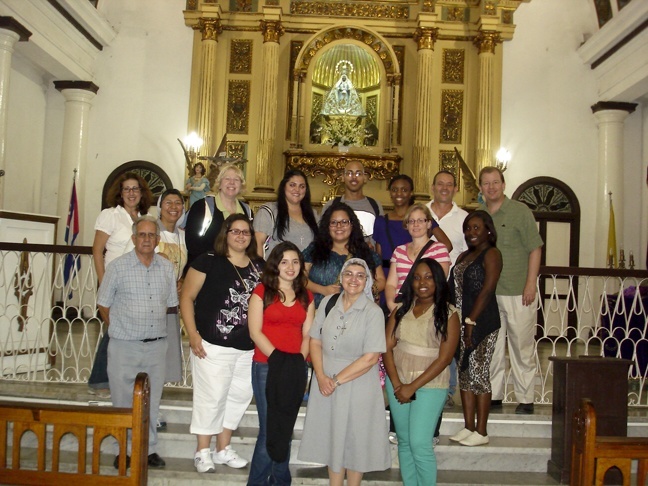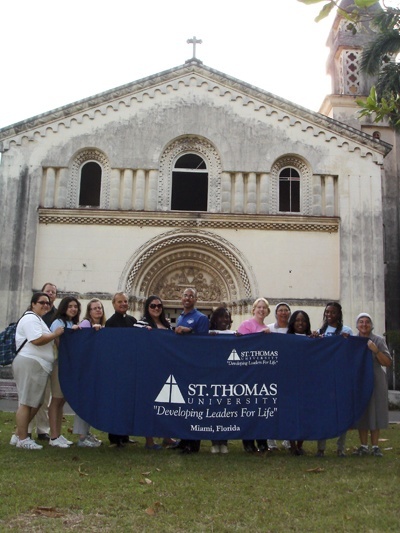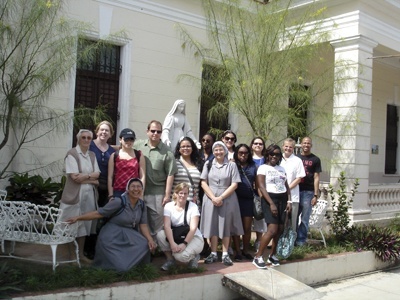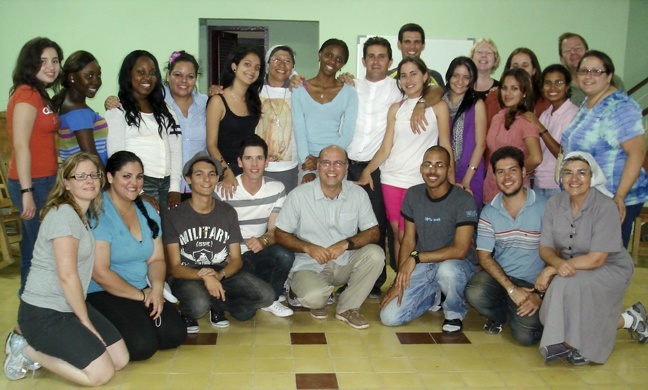
The faith in Cuba
Monday, June 18, 2012
*Sr. Ondina Cortes

Photographer: COURTESY PHOTO
Students from St. Thomas University pose for a photo at the Church of Our Lady of Regla in Havana.

Photographer: COURTESY PHOTO
Students from St. Thomas University, joined by Msgr. Franklyn Casale, the school's president, pose for a picture in front of the chapel and the courtyard of Santo Tomas de Villanueva University in Havana, whose takeover by Fidel Castro's government resulted in the opening of the university here in Miami.
In Havana, we visited “el Rincón de San Lázaro” (St. Lazarus’ Corner) and leper colony, which enabled us to see the charitable works of the Church and examples of popular religiosity. We also visited the Shrine of Our Lady of Regla and other important sites and met with the young man who directs the Archdiocese of Havana’s youth ministry. In Santiago, we visited our Claretian Missionary Sisters community and were able to visit El Cobre to honor Our Lady of Charity, without whom it would be impossible to understand not just the faith in Cuba, but also what it means to be Cuban. This year, Cuba celebrates the 400th anniversary of the discovery of this image in the Bay of Nipe.
They were marvelous days of fraternal encounters with so many people who made our journey easy and gave witness to what it means to live the faith in Cuba, remaining strong despite difficulties, and staying there for love of the Church.
For the youth in Cuba, it was an opportunity for exchange and joy in the knowledge that other young people outside the island now support and love them. Our group of students from South Florida was comprised of two Mexicans, three Haitians, one Dominican, two daughters of Cubans and one Honduran-Dominican.

Photographer: COURTESY PHOTO
Students from St. Thomas University visit the leper colony of San Lazaro, where Daughters of Charity carry out their mission.
We hope to be able to continue to offer this course once a year and take students to Cuba as a means to can accomplish what John Paul II requested: “for Cuba to open itself to the world and the world open itself to Cuba.” I believe these encounters of faith and fraternity build bridges that enable us to better understand one another and grow in communion.

Photographer: COURTESY PHOTO
Students from St. Thomas met up with a group of university students in Camaguey, a meeting arranged by a local priest, Father Enrique Rodriguez.

